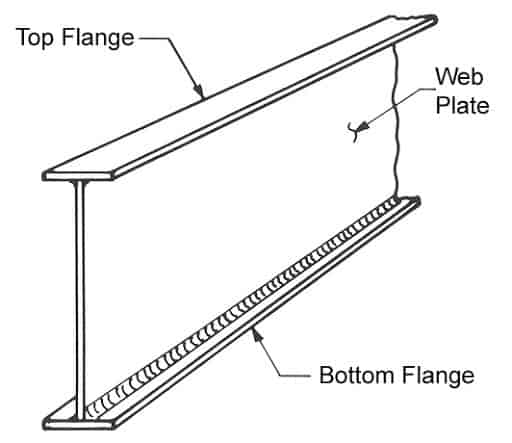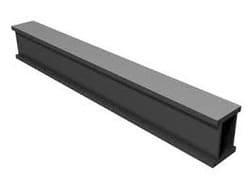I recommend reviewing your construction standard.
This calculator may provide a sanity check for several design codes, but is not a substitute for experienced engineering help.
Civilbay Home > Steel > Crane Runway Beam Design - AISC LRFD 2010 and ASD 2010
Crane runways are a building component that carries almost exclusively live load, other building components see less than 50% live load.
The crane will place both vertical and horizontal loads on the runway, and if the rail is not aligned with the web, a torque will be applied.
It is usually OK to weld stiffeners to the web and top flange, but not the bottom flange, and not at the web flange connection. The stiffeners need to be fitted up tight to the lower flange. The explanation is that the alternating tensile loading of the bottom flange makes any welding on the bottom flange a potential fatigue crack.
Runway beams often are stress revealed after welding.
Box beam crane girders have a weight advantage on a crane, but require more welding than an I beam girder to assemble. The usual result is that once all of the parameters that create the job cost are examined, most of the time box girders will win for crane structure, and I beam will win for crane runways. Local conditions come into play sometimes that lead to other solutions like concrete crane runways in large concrete mill buildings.
Most of the discussion above I agree with, building / designing crane runways needs all of the details to work together.
Muthu The section you provide above is similar to what is often used in the US. I generally ask that the calculations be a deliverable, and do a review / comparison with the crane builders crane runway loading diagram. The design of the rail clips and pad under the rail is also important. Some rail clips have components that need to be welded to the (others require holes to be drilled) girder which is best done at the fabricators shop.






![[sadeyes] [sadeyes] [sadeyes]](/data/assets/smilies/sadeyes.gif)
![[pipe] [pipe] [pipe]](/data/assets/smilies/pipe.gif)